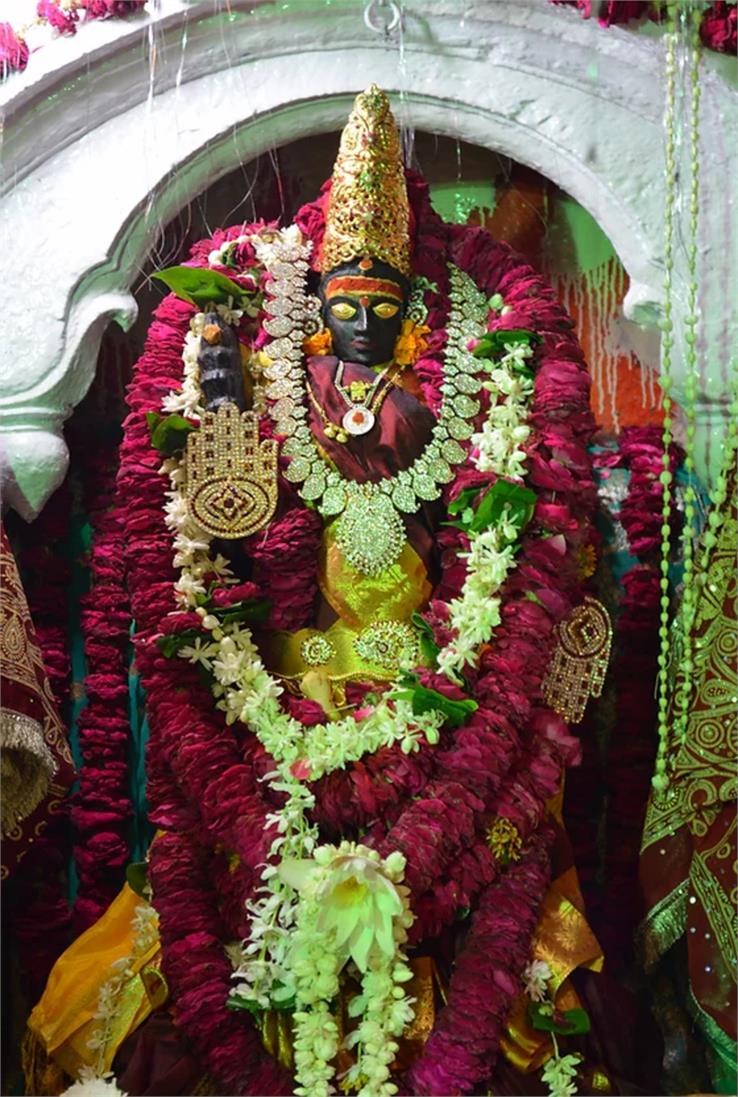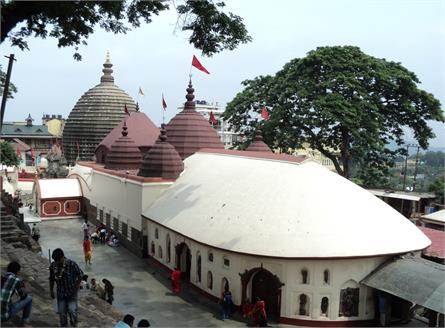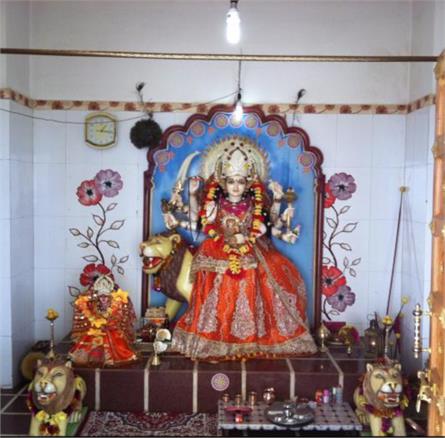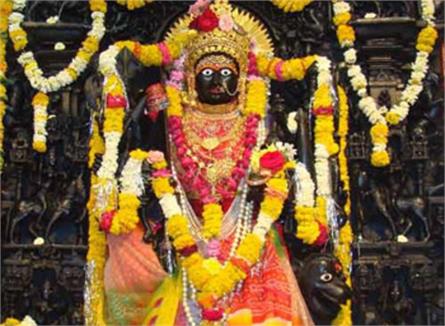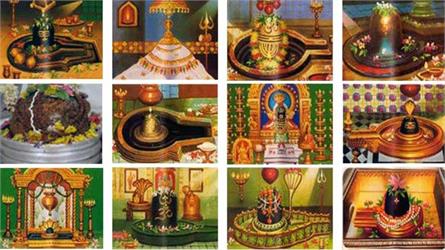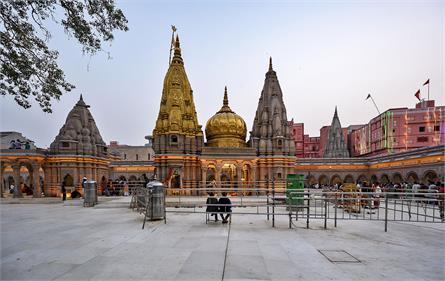Vishalakshi Devi - Recognition, History & Temple timings
The Vishalakshi Temple, also known as Vishalakshi Gauri Temple, is one of the prominent temples of Varanasi that belongs to the Goddess Vishalakshi. The Goddess Vishalakshi is an aspect of the goddess Parvati or Gauri and is believed to have large eyes as the name also says ‘Vishalakshi = Vishal (big) + akshi (eyes).’ It is located at the Mir Ghat on the banks of the Ganga River in the city of Varanasi in Uttar Pradesh, India. The temple is considered as a Shakti Pitha dedicated to the Hindu Divine Mother, Adi Shakti. The popular holy place in Varanasi is part of the famous triad of temples, Kanchi Kamakshi, Madurai Meenakshi, and Kashi Visalakshi.
Also Read: The Divine Power of 12 Jyotirlinga
It is considered that the earrings or kundal of the Goddess Sati had fallen here.
The city of Varanasi depicts Shastanga (six-fold) yoga through six temples which are:-
- The Vishwanath Temple
- The holy river Ganga
- The Dhudiraj Temple (dedicated to Lord Ganesha)
- The Vishalakshi Temple
- The Kala Bhairava Temple
- The Dandapani Temple (devoted to Lord Shiva)
There is a holy ritual in which the pilgrims bathe in the sacred water of the River Ganga before worshipping Goddess Vishalakshi. This is also believed that the offerings made in the form of puja, jal, reciting hymns are highly fruitful owing to the power of the presiding goddess. The childless couples worship Devi for progeny, unmarried girls for a groom, and unfortunate people for the turn of their fortune.
Also Read: Kashi Vishwanath Jyotirlinga Sacred Heaven On Earth
Goddess Vishalakshi
The present sculpture of the goddess Vishalakshi is made from a polished black stone during 1971 at the time of temple’s renovation with Tamil patronage. The right arm of the deity is holding a lotus in its hand, while the left arm is empty and facing downward. Sitting straight in front of the main door, her sightings can be easily obtained from the street itself when the front doors are open.
According to the legends, the place is considered as an Upapeetha (a minor or sub-center) because the karna kundala, which had fallen here was just an ornament, not any part of the body. Another version states that this place is Shakti Peetha as one of the three eyes (Akshi) of Devi Sati fell here. Hence this could be one of the reasons that the Mother here is known as Vishalakshi.
Also Read: Khajji Nag Temple
Architecture
The Vishalakshi Temple has a unique architecture of South Indian style. An ornamented tower called gopuram is standing in front of the main entrance of the temple. The inscriptions of lions are present on both sides of the gate with a lovely marble relief depicting the popular goddess Lakshmi on the top. She is sitting upon a lotus flower with elephants on both her sides pouring water over her, this famous illustration of the goddess is known as Gajalakshmi.
Shiva lingams, nagas (divine serpents), and a beautiful Ganesh Sculpture are at the display inside the inner periphery of the temple. There is a marble statue of Adi Shankaracharya seating in a cross-legged position present directly opposite to the main door behind the main shrine.
There is a sacred storage area on the right side of the temple. Inside the room, one can find a sculpted horse and an alternative image of the goddess Vishalakshi which are periodically brought out during special processions. At these times, Maa Vishalakshi is being made seated upon the horse and given a small tour by taking them to nearby streets. Moreover, there are a smaller shrine dedicated to Lord Shiva and a big lingam that represents male creative energy within the room. The room also boasts a very interesting feature where there are nine statues placed upon a platform. They represent the planetary deities from Vedic astrology in anthropomorphic form. These sculptures are regularly worshipped, while offerings are made in the form of flowers, leaves, and even marked with bright vermilion powder.
Also Read: The Mystry of Kamrunag Temple
Further, the temple houses a verandah located in front of the main shrine, which is the most decorated area. The four concrete pillars of the verandah have a smooth texture and exhibit the sculpted reliefs of floral designs, protective figures, and yantras. The canopy-like ceiling directly above the area is painted with a grid of 12 squares, each comprising a different zodiacal image. There is a high-relief depiction of Shiva and Meenakshi wedding above the main shrine.
The main sanctum sanctorum (Garbhagriha) embraces two idols of Goddess Vishalakshi, the original idol and the one which is installed later. The original one is a smaller black stone idol of Adi Vishalakshi present in the left backside, and the other one is a black stone image embellished with jewels and flowers.
More information about the temple
1. Morning timings: 4.30 AM to 11.00 AM
2. Evening timings: 5.00 PM to 10.00 PM
Before entering the temple, the devotees usually take a dip in the holy Ganga river.
Special Occasions
The occasions like Navratri falls in the waxing fortnight of the Hindu month of Ashwin (October) and celebrates the triumph of Goddess Durga over the demon Mahishasura are being celebrated with full enthusiasm and zeal among the devotees. The other Navratri falls in the fortnight of the Chaitra (month of March). The festival continues for nine days with the worship of Navadurga (Nine Durgas).
Kajali Tij (Black Third), the annual festival of the temple is held on the third day during a waning fortnight in the Hindu month of Bhadrapada (August). Around this time, women sing rainy season songs full of affection. The holy day is celebrated by women, especially for the welfare of brothers.
Other places to visit
- Kashi Vishwanath Jyotirlinga
- Annapurna Temple
- Kaal Bhairav Temple Kashi
- Vishwanath Temple
- Maha Gauri Mandir
- Gyan Kup (Gyan Vapi well)
How to reach
1. Via Air
Lal Bahadur Shastri International Airport in the city of Varanasi (Banaras) is the nearest airport with great connectivity from all the major cities. The temple is located at a distance of 25 km from the airport. Cabs, taxis, buses, and other public and private transports are easily available that can take you to your desired destination.
2. Via Rail
The nearest railhead to the Vishalakshi temple is Varanasi Junction, which is just 5 km away from the temple.
3. Via Road
Varanasi has well-maintained and well-connectivity of roads connecting major cities throughout India. Public and private means of transportation are easily available to reach the temple.
